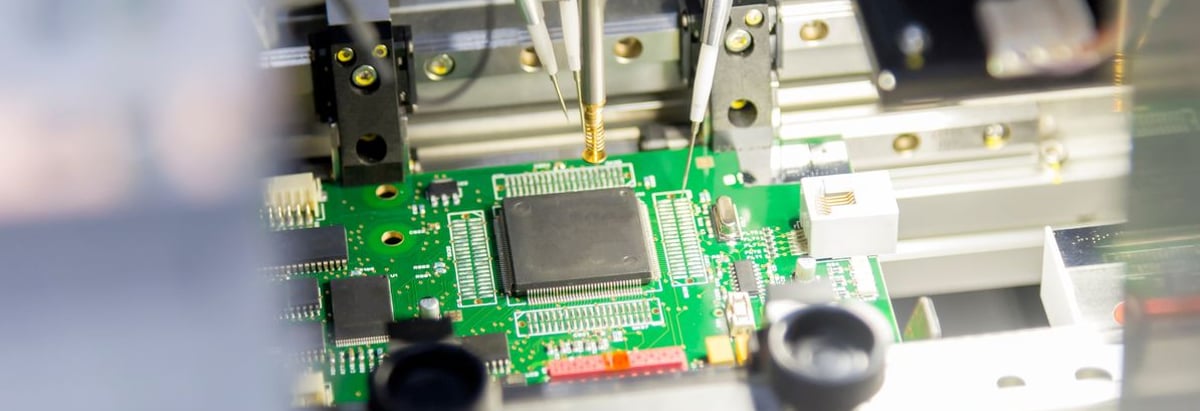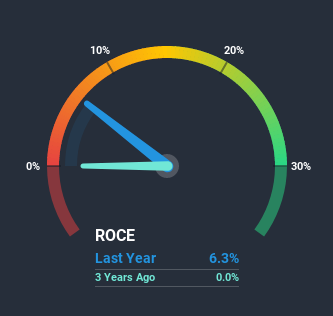- Italy
- /
- Semiconductors
- /
- BIT:ELES
Investors Could Be Concerned With ELES Semiconductor Equipment's (BIT:ELES) Returns On Capital

Finding a business that has the potential to grow substantially is not easy, but it is possible if we look at a few key financial metrics. One common approach is to try and find a company with returns on capital employed (ROCE) that are increasing, in conjunction with a growing amount of capital employed. Ultimately, this demonstrates that it's a business that is reinvesting profits at increasing rates of return. However, after investigating ELES Semiconductor Equipment (BIT:ELES), we don't think it's current trends fit the mold of a multi-bagger.
What is Return On Capital Employed (ROCE)?
If you haven't worked with ROCE before, it measures the 'return' (pre-tax profit) a company generates from capital employed in its business. Analysts use this formula to calculate it for ELES Semiconductor Equipment:
Return on Capital Employed = Earnings Before Interest and Tax (EBIT) ÷ (Total Assets - Current Liabilities)
0.063 = €1.2m ÷ (€26m - €6.9m) (Based on the trailing twelve months to June 2020).
Thus, ELES Semiconductor Equipment has an ROCE of 6.3%. In absolute terms, that's a low return and it also under-performs the Semiconductor industry average of 11%.
See our latest analysis for ELES Semiconductor Equipment

In the above chart we have measured ELES Semiconductor Equipment's prior ROCE against its prior performance, but the future is arguably more important. If you're interested, you can view the analysts predictions in our free report on analyst forecasts for the company.
What The Trend Of ROCE Can Tell Us
In terms of ELES Semiconductor Equipment's historical ROCE movements, the trend isn't fantastic. Over the last two years, returns on capital have decreased to 6.3% from 9.2% two years ago. Given the business is employing more capital while revenue has slipped, this is a bit concerning. If this were to continue, you might be looking at a company that is trying to reinvest for growth but is actually losing market share since sales haven't increased.
On a side note, ELES Semiconductor Equipment has done well to pay down its current liabilities to 27% of total assets. That could partly explain why the ROCE has dropped. Effectively this means their suppliers or short-term creditors are funding less of the business, which reduces some elements of risk. Some would claim this reduces the business' efficiency at generating ROCE since it is now funding more of the operations with its own money.
The Key Takeaway
From the above analysis, we find it rather worrisome that returns on capital and sales for ELES Semiconductor Equipment have fallen, meanwhile the business is employing more capital than it was two years ago. However the stock has delivered a 74% return to shareholders over the last year, so investors might be expecting the trends to turn around. In any case, the current underlying trends don't bode well for long term performance so unless they reverse, we'd start looking elsewhere.
If you want to know some of the risks facing ELES Semiconductor Equipment we've found 3 warning signs (2 are a bit concerning!) that you should be aware of before investing here.
For those who like to invest in solid companies, check out this free list of companies with solid balance sheets and high returns on equity.
When trading ELES Semiconductor Equipment or any other investment, use the platform considered by many to be the Professional's Gateway to the Worlds Market, Interactive Brokers. You get the lowest-cost* trading on stocks, options, futures, forex, bonds and funds worldwide from a single integrated account. Promoted
Valuation is complex, but we're here to simplify it.
Discover if ELES Semiconductor Equipment might be undervalued or overvalued with our detailed analysis, featuring fair value estimates, potential risks, dividends, insider trades, and its financial condition.
Access Free AnalysisThis article by Simply Wall St is general in nature. It does not constitute a recommendation to buy or sell any stock, and does not take account of your objectives, or your financial situation. We aim to bring you long-term focused analysis driven by fundamental data. Note that our analysis may not factor in the latest price-sensitive company announcements or qualitative material. Simply Wall St has no position in any stocks mentioned.
*Interactive Brokers Rated Lowest Cost Broker by StockBrokers.com Annual Online Review 2020
Have feedback on this article? Concerned about the content? Get in touch with us directly. Alternatively, email editorial-team (at) simplywallst.com.
About BIT:ELES
ELES Semiconductor Equipment
Designs, manufactures, and sells test equipment, fixtures, solutions, and services for the semiconductor industry in Italy and internationally.
Flawless balance sheet with reasonable growth potential.
Market Insights
Community Narratives




